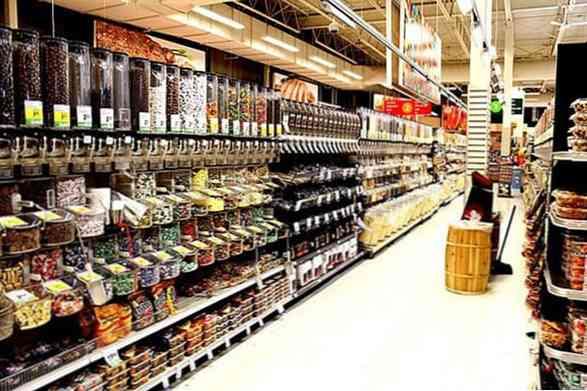There is hardly any field of economic fields except that it is affected by the accelerated technological mutations of our contemporary world, and among the most areas that have witnessed clear impacts of retail trade, which in its traditional direct form has become a serious threat of e -commerce that is a more modern alternative, albeit controversial in many cases.
Rising competitor
E -commerce records four times the growth rates recorded by the traditional retail trade, at a time when traditional retail trade grows at rates close to 4% during 2016 and 2017 e -commerce achieves growth rates of approximately 16% during the same period, so if the leadership in trade is currently notIt is still for direct trade, but this electronic will excel within 10 years at most, according to estimates of "Time" magazine.
Developing markets cause a decline in the rate of direct trade constantly, especially markets with high economic growth rates, such as India, as the rate of electronic retail trade in the Asian country, for example, is the weakness of its global rate, due to the passage of the market there in the growth stage and not the relative stability as is the caseIn developed countries.
Indeed, this trade -based trade records the weak growth rates that this electronic records in general, so that the "Business Insider" website expects the trade using the mobile using half of the value of the e -commerce by 2020 if it continues in its current growth rates.
The main reason behind the increase in consumers' dependence on electronic applications, especially those for mobile, and from it what a study on the person spending three hours on average daily revealed the Internet online devices connected to the Internet, whether mobile, "tablet" or computers (and not for work),It makes 64% of consumers confirm their feeling that purchasing things via mobile phone is "easier" and even "cheaper" price of buying them directly as usual, and two -thirds of users believe that they provide larger and more discounts and discounts.
The shortcut in seconds

Of course, the matter in dealing with the so -called "glamor commodities", that is, those similar goods anywhere such as preserved foods or salt and the majority of grocery products, some clothes and some electronic devices as well, the customer is heading at the lowest price and for the closest to obtaining the product, and there is no doubt that the Internet isIt has become the "most familiar" for many consumers, as well as the benefit of sellers online from the savings of "discounts and downloads" in a way that supports their ability to sell at preferential prices.
For example, the electronic purchase application prepared by the "Wall Mart" retail trade takes 4.1 second only to search for the desired product, and the same time to approve the purchase process, and this is much faster than any of the traditional trade forms without a doubt.
Because of these multiple advantages of offers and prices in which there is abundance and easy access and free delivery, the traditional retail trade in many countries suffers from a significant decline, and the newspaper "Telegraph" in this regard mentions 1,100 retail stores in the United Kingdom to close its doors because of its inability to compete with e -commerce.That is constantly expanding.
In the United States, a report by the American Chamber of Commerce indicates that retail stores are in the case of "stability" since 2015, as their college numbers have not witnessed an increase or decline due to the equal number of open stores with those that close their doors, despite their continued growth numbers for nearly 4 decadesBefore that, indicating the possibility of its numbers to decline in the future.
Is "direct trade"?
Despite the continuous expansion of e -commerce, direct shopping remains a different luster, according to Economist, as two -thirds of consumers used to shop confirm their inability to dispense with "permanently" from buying goods directly from time to time, because of their desire to "communicateAl -Bishri "and also for some of them refusing to buy clothes, electrical appliances, or even some types of food without trying them and seeing them to see the eye.
Rather, a study by "Business Insider" reveals the high percentage of "backward" (or goods that are returned to the seller) in e -commerce, especially those that are done using mobile applications, making the percentage of those who stopped buying using these applications up to 60% of users, It indicates that the growth of the large market in sales using mobile applications may be unstable, always or fully clear until the service stabilizes more..
The question constantly arises about whether one of them could open a small food, clothes, or other goods in traditional retail methods, in light of all those changes in the sector, to achieve little success?
According to a study of the "Harvard" College of Business Administration, this is possible with several conditions, the most important of which is the benefit of the relative feature of the small store, which is the great flexibility resulting from the lack of expenses, so that it can make many offers for goods that he sells at prices that approach the cost price without worrying about the fixed and very variable cost accounts asIt is the case for major stores and e -commerce.
This requires the nature of the matter to pay attention to the most important weakness of the small stores, which is the limited financing in a way that necessitates the necessity of paying attention to the necessity of "avoiding the error" in the quality of the goods in which the store invests, because it "cannot be compensated" for the limited resources.